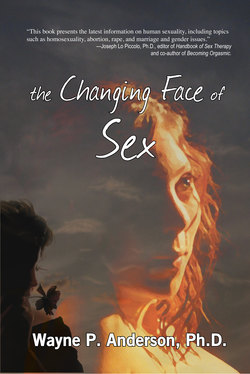Читать книгу The Changing Face of Sex - Wayne P. Anderson PhD - Страница 21
На сайте Литреса книга снята с продажи.
Hendrik van de Velde gives instructions on how to do sex.
ОглавлениеReal advances in availability of information about sex came in the 1920s. A major contributor was a Dutch gynecologist, Theodor Hendrik van de Velde, who published in 1926 his book Ideal Marriage: Its Physiology and Technique. It quickly became a best seller, went into 46 printings in the original edition,and was translated into many languages. It continued to sell after WW II. The copy I own was revised in 1965, and it was revised again in 2000, a remarkable life for a book written that long ago. It was the kind of book that people were often given as a wedding present.
The book wasn’t without problems from the legal and moral authorities of the day. The first printing had an insert: “The sale of this book is strictly limited to members of the medical profession, Psychoanalysts, Scholars, and to such adults as may have a definite position in the field of Physiological, Psychological, or Social Research.”Later in 1931 the Catholic Church placed Ideal Marriage on the Index Librorum Prohibitorum.
As Van de Velde knew that writing a book of this nature would cause problems that might have interfered with his medical practice, he waited until he retired to write the book. As he says in his introduction, “There is need for this knowledge: there is too much suffering endured which might well be avoided, too much joy untasted which could enhance life’s worth.”
Ideal Marriage is a textbook about sex written for the general reader and covers in detail the anatomy and physiology of sex and then goes into detail about the physiology and technique of sexual intercourse. He goes into great detail on sexual techniques, including such acts as cunnilingus, which he stresses should be part of the lovemaking. Where he really cuts away from the previous era is his insistence that the woman is a full partner in the act and not a passive receiver.
His philosophy of mutual sexual pleasure is summed up in the introduction to chapter IX, Sexual Union. “For sexual union only takes place physiologically (i.e. according to the laws of Nature), rightly and suitably, if and when both partners fully participate and feel supreme sexual pleasure and complete relaxation or relief. If, anywhere and in any circumstances, the demand for equal rights for both sexes is incontestable, it is so in regard to equal consent and equal pleasure in sexual union, and in the interests of both.”
Even with the wide acceptance of Ideal Marriage, resistance to women learning about their own physiology and sex in general was still strong, but a beginning had been made. At the University of Missouri, the chair of the Psychology Department, Max Friedrich Meyer, was threatened with firing when it was discovered in 1929 he had taught a sex class for women.
He was later fired when a student, O. Hobart Mowrer, did a survey of sex in marriage. Mowrer was discharged from the university without a degree, earned his degrees at Johns Hopkins. Mowrer became a major figure in psychology and was later given a degree by the University of Missouri.
Van de Velde’s was the major work breaking down the Victorian attitude that sex was for the man only, and not until Kinsey’s work 20 years later was there a more influential work on sex.
The next major change in sexual behavior and attitudes would wait until the upheaval that occurred between 1968 and 1972, the topic in the next chapter.
For those readers interested in the lives and work of the sex researchers, a good source is Edward Brecher’s The Sex Researchers, 1969.
